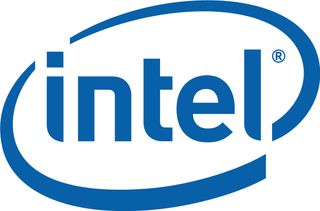Intel Crowned as Nation's Largest Green Energy Purchaser
Intel has been, once again, landed top spot on new EPA rankings

According to the EPA, Intel acquired 2,502,052,000 kWh from solar and wind energy sources. The company said that those 2.5 billion kWh are the equivalent of equivalent environmental impact of taking more than 340,000 passenger cars off the road each year, or avoiding the amount of electricity needed to power more than 215,000 average American homes annually.
Following Intel in the ranking are Kohl's Department Stores (1,524,656,000 kWh), Walmart (872,382,088 kWh), Whole Foods Market (800,257,623 kWh), and Johnson & Johnson (553,565,521 kWh).
The tech sector has slipped in the ranking as Cisco is the second IT company only at rank #15 (268,644,637 kWh), Sprint at #26 (176,000,000 kWh), Dell at #43 (114,536,440 kWh) and Google at #47 (103,403,137 kWh). However, these numbers only tell half the story, as Intel's huge purchase covers only 88 percent of the company's energy use. while Kohl's covers 100% and Whole Foods even 106 percent, while Walmart is at just 28 percent.
Cisco's green energy coverage is 27 percent, Sprint is at 5 percent, Dell at 28 percent, and Google at 5 percent.
Intel has been ranked by the EPA as the largest green energy buyer since 2008, when the company reported purchases of 1,302,040,000 kWh and 46 percent coverage of its total energy use.
Stay on the Cutting Edge
Join the experts who read Tom's Hardware for the inside track on enthusiast PC tech news — and have for over 25 years. We'll send breaking news and in-depth reviews of CPUs, GPUs, AI, maker hardware and more straight to your inbox.
-
sunflier ReplyIntel has been, once again, landed top spot on new EPA rankings
I bet Intel will disagree they are not a "has been". Seriously, though that's kinda what sounds like. -
__-_-_-__ sirmorlukWay to Go Intel!"Intel's huge purchase covers only 88 percent of the company's energy use."Reply
those 22% left is higher then most small country total power consumption. intel it's not the way to go.
Whole Foods is. -
BSMonitor "those 22% left is higher then most small country total power consumption. intel it's not the way to go.Reply
Whole Foods is."
Really? 22 + 88 = 100??
Wow trolls are dumb. -
freggo __-_-_-__"Intel's huge purchase covers only 88 percent of the company's energy use."those 22% left is higher then most small country total power consumption. intel it's not the way to go.Whole Foods is.Reply
I think that "7 out of 5 readers" will agree that your math is off just ever so much :-)
Any Moderator read this ???
We need a way to edit our posts !!!
-
CaedenV __-_-_-__"Intel's huge purchase covers only 88 percent of the company's energy use."those 22% left is higher then most small country total power consumption. intel it's not the way to go.Whole Foods is.Who cares about 'most small countries' Intel has more employees/contractors than most small countries. Intel has more money than most small countries, and most importantly Intel produces more than most small countries. Seriously, even if you take a stupidly utilitarian outlook at the situation you can easily say that Intel does more good for the world in the product they provide (much less the donations they provide) than most small countries, so I think they can be allowed to use a little bit of power here and there. Besides, when you consider the strip-mining and manufacturing processes behind most solar technology it quickly becomes apparent that solar is not doing the world any favors, not to mention what you do with all those batteries when you swap them out every few years. Solar is great, and I cannot wait until I can afford to get it for my house, but you do it to own/control your own power flow or to spout out factoids like this for PR, not to help the environment.Reply -
velocityg4 Two things I wonder with those numbers.Reply
1. How much of that energy actually came from solar/wind power? Unless they built separate "green" facilities and ran the grid in separately then there is no way to know if that power actually came from solar, wind, coal, &c. It just becomes fluff like carbon credits.
2. What is the environmental impact of all that "green" energy? If it was half solar panels producing Intel's 88%. That would require 1,269 Acres of land made permanently useless by coverage of solar panels (not to mention all the land temporarily lost to mine those materials for the panels and energy used in processing and forming). That is assuming the most efficient solar plant I've read about which produces 225 kW/Acre and that it actually gets an average of 12hours of usable light per day 365 days a year, most plants are far less efficient requiring far more land use. Wind is much better for land use but there are only so many areas that you can build wind farms. -
mrmaia Don't forget that hydro evergy is also "green" and that if Intel is buying solar/wind energy, it's forcing someone else to buy coal/oil energy.Reply -
house70 mrmaiaDon't forget that hydro evergy is also "green" and that if Intel is buying solar/wind energy, it's forcing someone else to buy coal/oil energy.how?Reply
Most Popular



